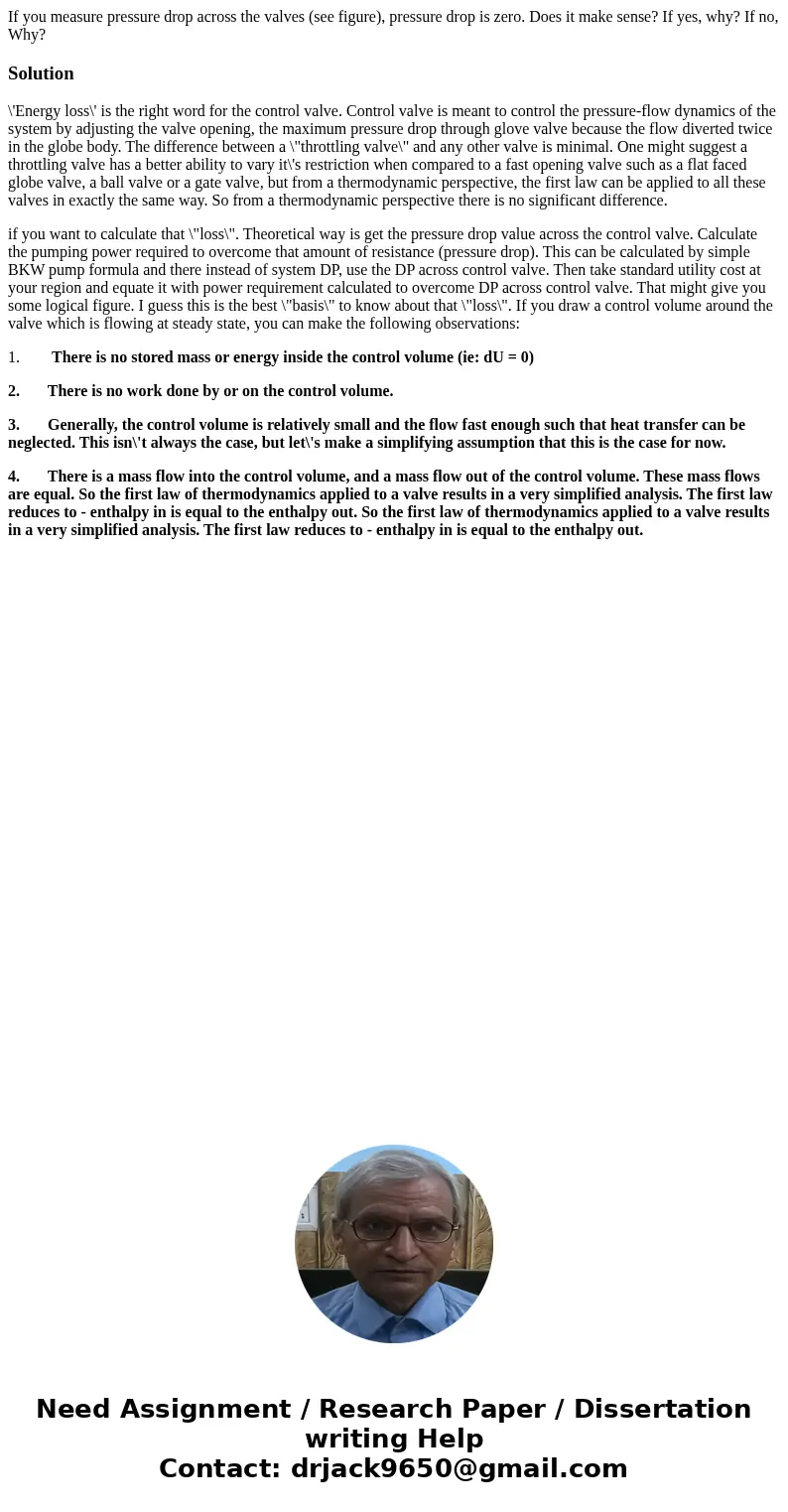If you measure pressure drop across the valves see figure pr
Solution
\'Energy loss\' is the right word for the control valve. Control valve is meant to control the pressure-flow dynamics of the system by adjusting the valve opening, the maximum pressure drop through glove valve because the flow diverted twice in the globe body. The difference between a \"throttling valve\" and any other valve is minimal. One might suggest a throttling valve has a better ability to vary it\'s restriction when compared to a fast opening valve such as a flat faced globe valve, a ball valve or a gate valve, but from a thermodynamic perspective, the first law can be applied to all these valves in exactly the same way. So from a thermodynamic perspective there is no significant difference.
if you want to calculate that \"loss\". Theoretical way is get the pressure drop value across the control valve. Calculate the pumping power required to overcome that amount of resistance (pressure drop). This can be calculated by simple BKW pump formula and there instead of system DP, use the DP across control valve. Then take standard utility cost at your region and equate it with power requirement calculated to overcome DP across control valve. That might give you some logical figure. I guess this is the best \"basis\" to know about that \"loss\". If you draw a control volume around the valve which is flowing at steady state, you can make the following observations:
1. There is no stored mass or energy inside the control volume (ie: dU = 0)
2. There is no work done by or on the control volume.
3. Generally, the control volume is relatively small and the flow fast enough such that heat transfer can be neglected. This isn\'t always the case, but let\'s make a simplifying assumption that this is the case for now.
4. There is a mass flow into the control volume, and a mass flow out of the control volume. These mass flows are equal. So the first law of thermodynamics applied to a valve results in a very simplified analysis. The first law reduces to - enthalpy in is equal to the enthalpy out. So the first law of thermodynamics applied to a valve results in a very simplified analysis. The first law reduces to - enthalpy in is equal to the enthalpy out.

 Homework Sourse
Homework Sourse